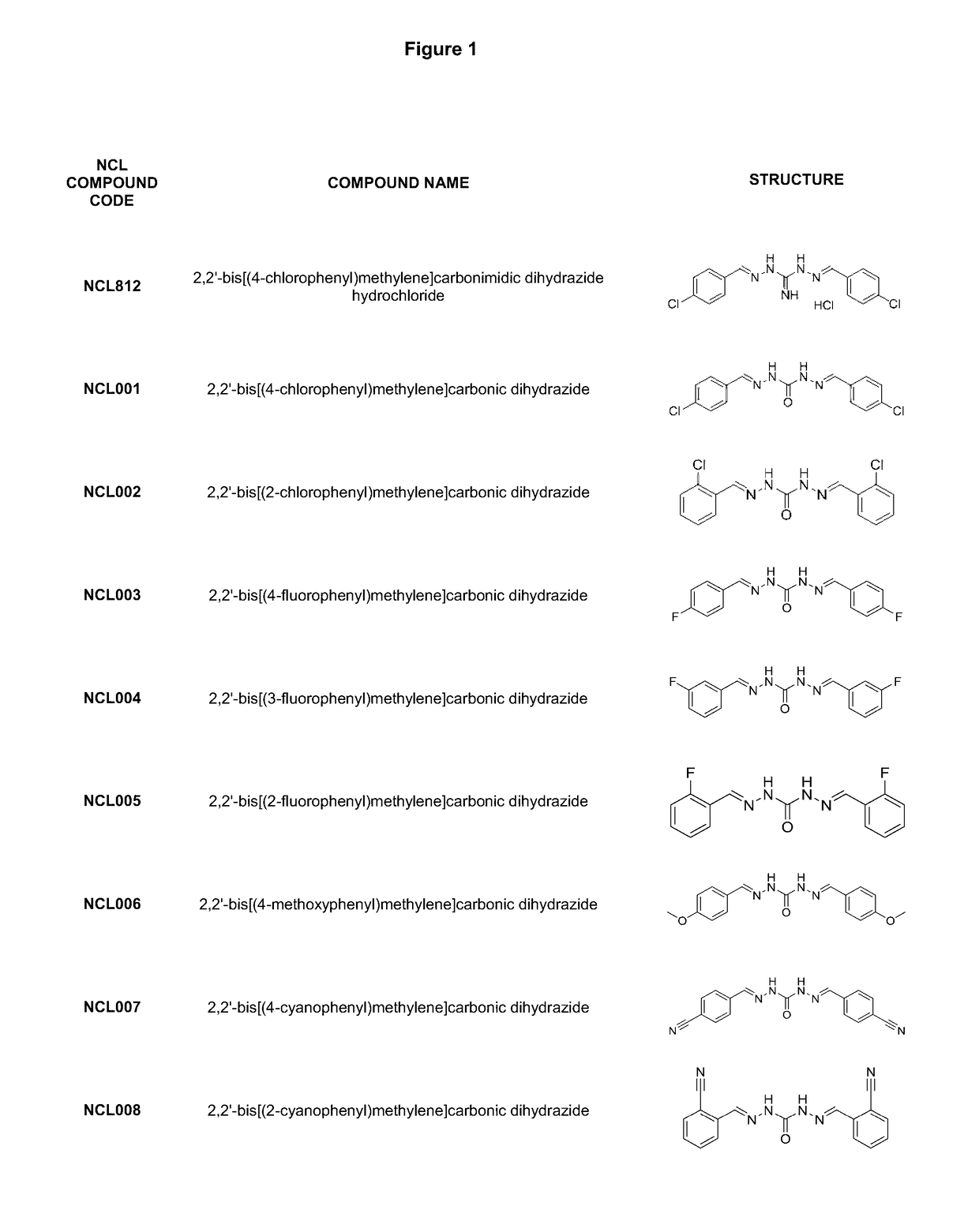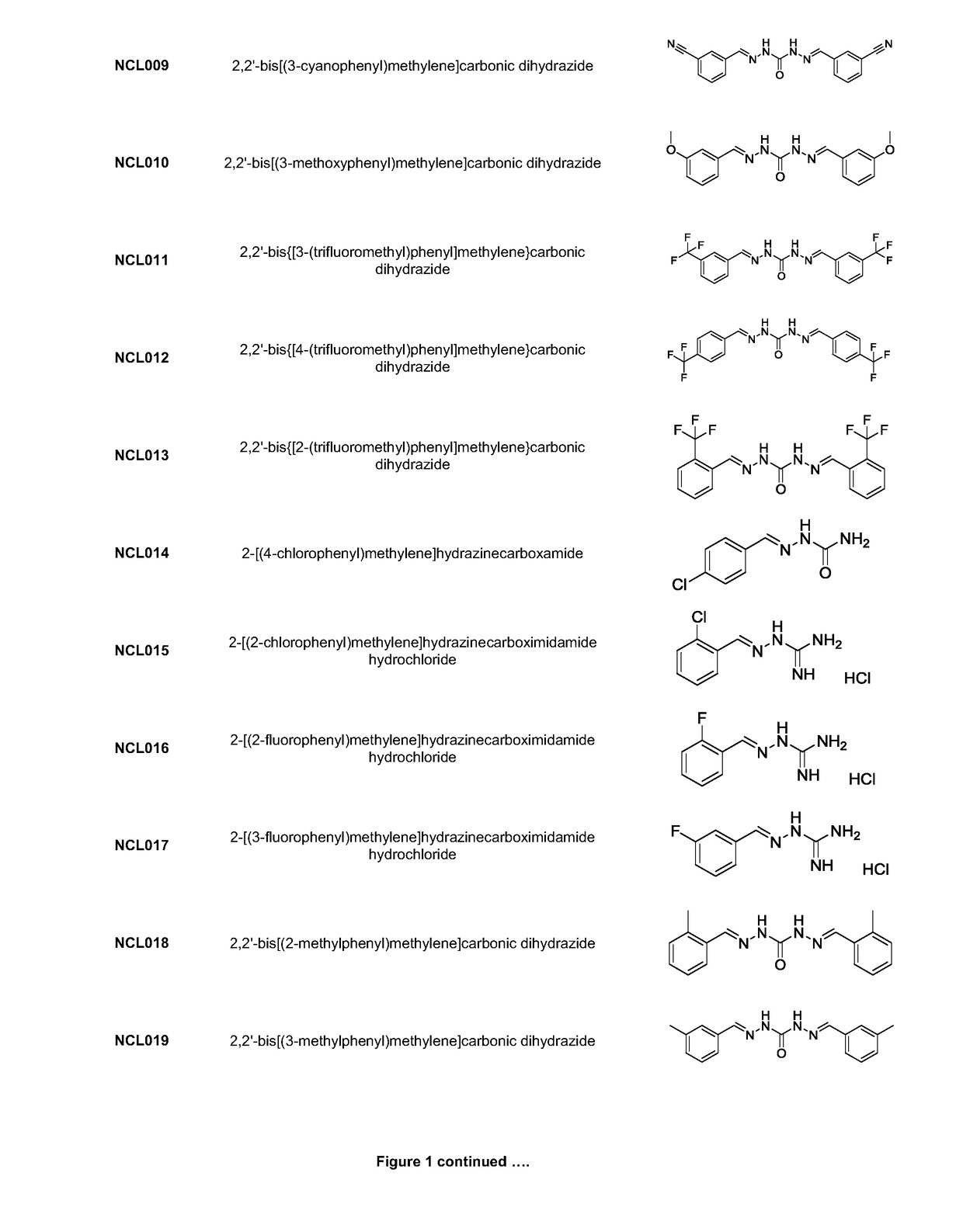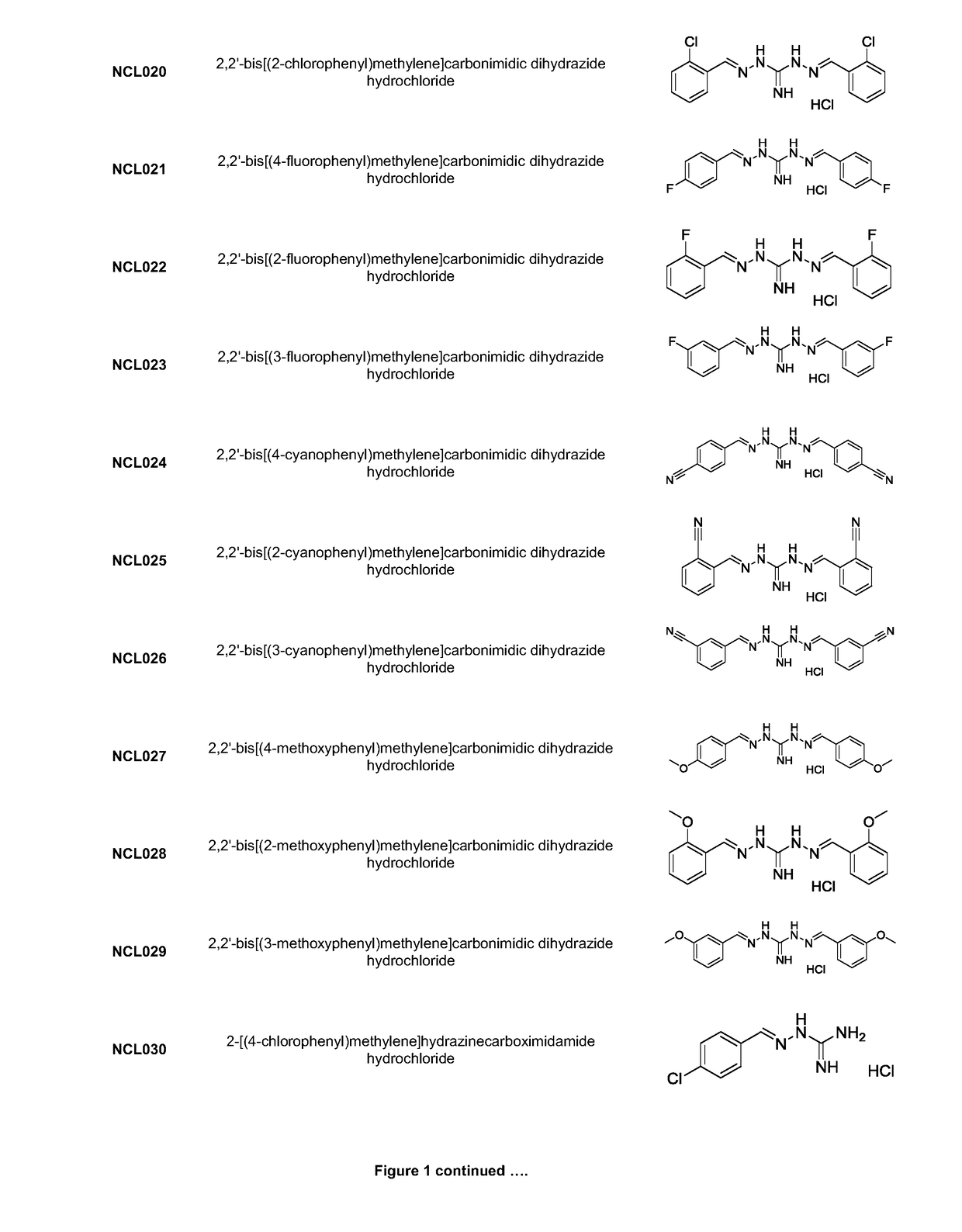Methods for treating protozoan infections
a protozoan infection and protozoan technology, applied in the field of formula i, can solve the problems of many opportunities for missed treatment, high incidence of undesirable side effects, poor compliance,
- Summary
- Abstract
- Description
- Claims
- Application Information
AI Technical Summary
Benefits of technology
Problems solved by technology
Method used
Image
Examples
example 1
on of NCL812 Analogues
Materials and Methods
NCL812
[0219]Analytical grade NCL812 with a defined potency of 960 mg / g (i.e. 96%) was obtained. The powder was stored in a sealed sample container out of direct sunlight and at room temperature at the study site. Aliquots (1 mL) of stock solution (containing 25.6 mg / mL of NCL812 in DMSO) were prepared and stored at −80° C. and defrosted immediately before use.
Synthesising and Testing of NCL812 Analogues
[0220]Analogues NCL001 to NCL275, as identified in FIG. 1, were synthesised using standard methods in the art. As an example, the methods used to manufacture compounds NCL097; NCL157; NCL179; NCL188; NCL195; and NCL196 are as follows:
NCL 097 (2,2′-bis[(3,4,5-trihydroxyphenyl)methylene]carbonimidic dihydrazide hydrochloride)
[0221]A suspension of 3,4,5-trihydroxybenzaldehyde (412.0 mg, 2.673 mmol, 2.21 eq.) and N,N′-diaminoguanidine hydrochloride (152.0 mg, 1.211 mmol) in EtOH (5 mL) was subjected to microwave irradiation (150 W) at 100° C. for...
example 3
Reduction Assay
[0237]Aim.
[0238]To determine the activity of NCL812 and NCL062 against Giardia duodenalis in vitro
[0239]Methods.
[0240]Giardia trophozoites were grown until confluent. The media was replaced with fresh media and they were cold shocked for 40 minutes (as above). Cells were diluted to a concentration of ˜500 000 cells / ml and 100 μl were added to each well of the assay plate (except media only control). The assay was incubated in an anaerobic environment (candle jar) for 42 hours at 37° C. Alamarblue™ was added to a concentration of 10% and the samples incubated in an anaerobic environment for a further 6 hours. After incubation the absorbance of each sample was read at 570 and 630 nm. The percent reduction of resazurin (Alamarblue™) was calculated and data was analysed with GraphPad Prism v6 software. Assay set-up: the assay was performed in 96 well plates in a total volume of 200 μl. 100 μl of NCL812 or NCL062 (concentration of 25.6 mg / ml in DMSO) or metronidazole (conc...
example 4
te Haemolysis Assay
[0245]Aim.
[0246]The aim of this study was to determine the in vitro toxicity of NCL812, NCL099 and NCL062 against mammalian cells.
[0247]Methods.
[0248]Whole sheep blood was obtained from Thermofisher scientific. The red blood cells were separated from other blood components via centrifugation at 1500 g for 10 minutes and washed with saline 3 times. Erythrocytes were diluted to a concentration of ˜1×1010 cells / ml in saline. 50 μl of NCL compounds diluted in DMSO (see below) were added to 1.5 ml Eppendorf tubes and 500 μl of diluted red blood cells were added to each tube. Erythrocytes were incubated with compounds for 30 minutes at 37° C. with gentle shaking (75 rpm). After incubation cells were placed on ice for 5 minutes then centrifuged at 1500 rpm for 10 minutes to pellet cells. The supernatant was removed and serially diluted in saline. Absorbance of the supernatant and dilutions were recorded at 550 nm. Sample lysis was compared relative to cells lysed 100% in...
PUM
| Property | Measurement | Unit |
|---|---|---|
| concentration | aaaaa | aaaaa |
| particle size | aaaaa | aaaaa |
| droplet size | aaaaa | aaaaa |
Abstract
Description
Claims
Application Information
 Login to View More
Login to View More - R&D
- Intellectual Property
- Life Sciences
- Materials
- Tech Scout
- Unparalleled Data Quality
- Higher Quality Content
- 60% Fewer Hallucinations
Browse by: Latest US Patents, China's latest patents, Technical Efficacy Thesaurus, Application Domain, Technology Topic, Popular Technical Reports.
© 2025 PatSnap. All rights reserved.Legal|Privacy policy|Modern Slavery Act Transparency Statement|Sitemap|About US| Contact US: help@patsnap.com



